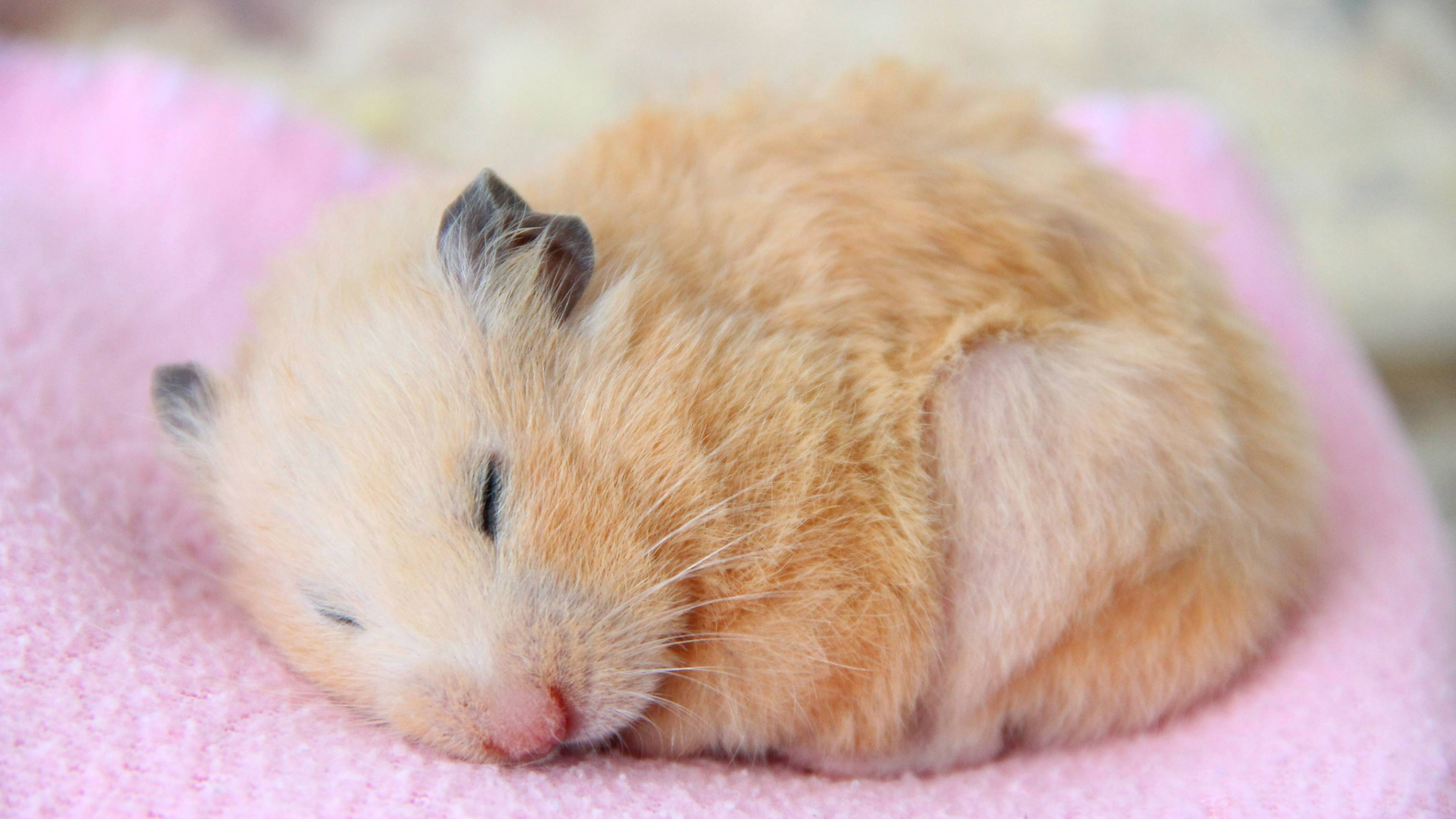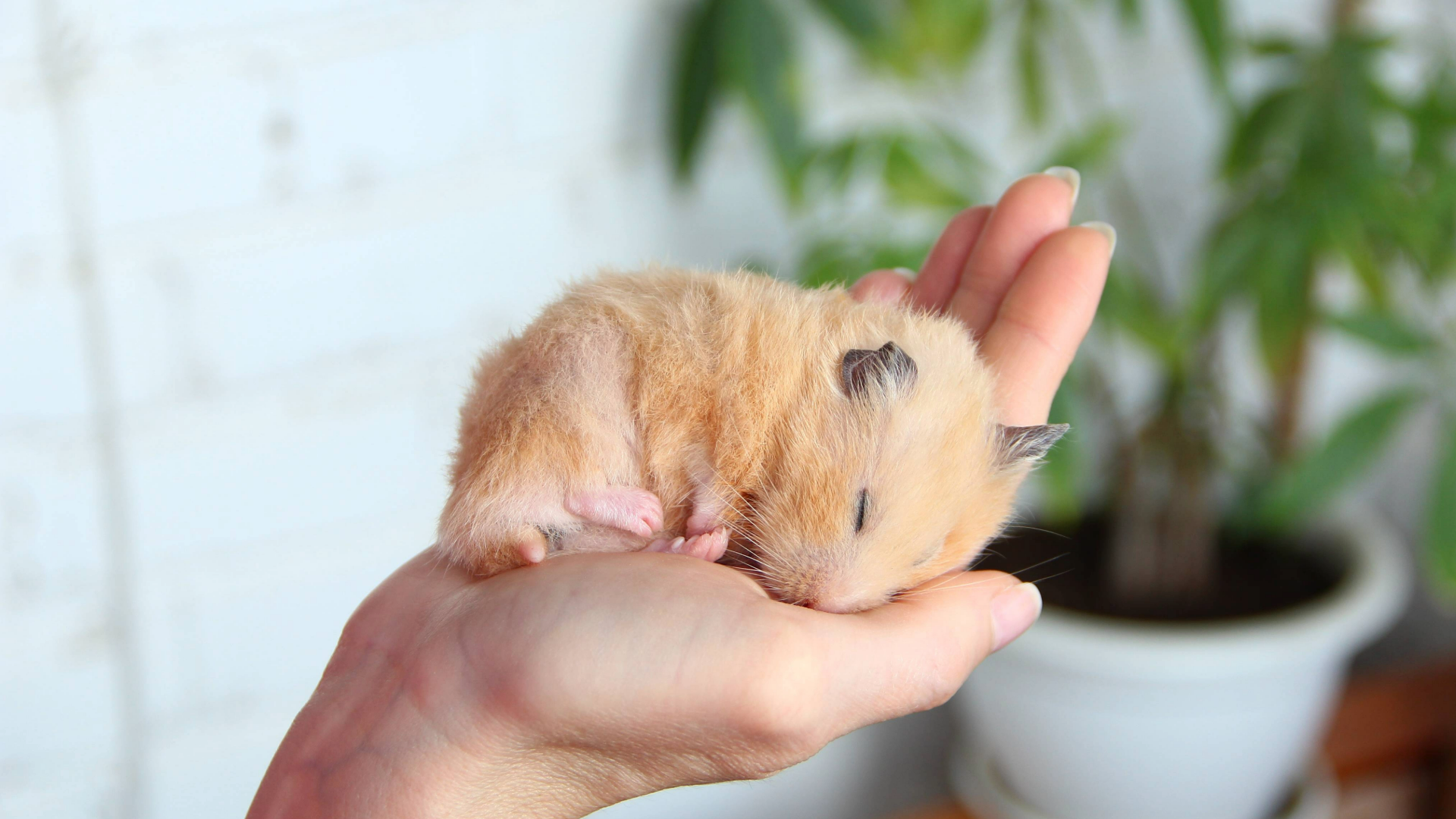Do hamsters hibernate? Your questions, answered by a vet
We asked a vet, ‘Do hamsters hibernate?’ Here’s what you need to know

If you’ve noticed that your hamster is barely moving and sleeping excessively, you might wonder, ‘Can hamsters hibernate?’
While they don’t ‘hibernate’ in the traditional sense, they can experience a similar condition called torpor, which can last anywhere from a few hours to several days. When your hamster gets too cold or faces a scarce food supply, they might enter this state to conserve energy and survive.
To ensure your hamster stays happy and healthy, you’ll need to keep their environment between 65-75°F (18–24°C), invest in one of the best hamster cages, and feed them an appropriate diet. To help you better understand torpor, we’ve consulted expert vets Dr. Elizabeth Racine and Dr. Rebecca MacMillan to answer your frequently asked questions, including the symptoms, causes, and when to seek medical help.
Do hamsters hibernate?
Hibernation is a prolonged period of limited activity that occurs in certain species of animals as a response to low temperatures and limited food supplies. During hibernation the body’s metabolic processes slow down, reducing energy expenditure and causing the animal to enter a state similar to a deep sleep.
For animal species that are true hibernators, this period allows them to survive through the harsh winter conditions by reducing their bodies’ needs for food and water intake. Most wild hamster species live in regions that do not have particularly harsh winters, so they do not naturally hibernate.
However, many species that sleep in cold conditions are not experiencing true hibernation. Instead, animals like hamsters experience a process called torpor. Torpor is a prolonged response to low temperatures similar to hibernation, but typically lasts for shorter periods of time.
If your hamster is sleeping for hours or days at a time, particularly in colder temperatures, then he is most likely experiencing torpor. Because torpor and hibernation are similar processes, some experts will use these terms interchangeably.
Get the best advice, tips and top tech for your beloved Pets
When do hamsters hibernate?
To help you determine whether or not your hamster is in a state of torpor, you’ll first need to take a close look at his environment. The biggest factor contributing to hibernation behavior in hamsters is temperature. The ideal temperature for hamsters is about 65-75°F (18–24°C).
Below this range, your hamster may become too cold and may enter torpor. Be sure to keep your hamster’s cage in a warm – but not hot! – room and provide plenty of fresh, dry bedding. Your hamster should also be kept in a well-ventilated area, but be careful to avoid cold drafts from windows or air conditioning units which may also make the environmental temperature too cold for your hamster.
In addition to temperature, other factors such as food supply and the daily cycle of light and darkness in your hamster’s environment can also affect torpor behaviors. One study found that hamsters with a restricted food supply were more likely to experience deep torpor, while those with ample food stores experienced shorter bouts of torpor and generally maintained higher body temperatures.
Check out our guide to what can hamsters eat for a breakdown of suitable foods and if you suspect your hamster has entered torpor, addressing these environmental factors may help him return to his normal active state.
Kaytee Clean & Cozy Super Absorbent Paper Bedding for Cage
To keep your hamster warm and cozy, you’ll need to provide them with sufficient bedding—and this option by Kaytee is an excellent choice. It’s dust- and fragrance-free offers an odor control guarantee, and can absorb up to six times its weight in liquid.
How can you tell if your hamster is hibernating?
Many pet owners worry that their hamster is severely ill when they find the animal in a state of torpor. Admittedly, if you have never seen this behavior before the symptoms can be alarming. Hamsters in torpor often act lethargic, listless, or excessively sleepy. The hamster may even be completely limp if they are in a particularly deep state of torpor. The hamster’s body will often feel cool to the touch, especially in the extremities such as the limbs, feet, and tail. Occasionally, you may notice the hamster shaking or shivering as it goes into or comes out of the state of torpor.
In most cases, a hamster in torpor can be roused with stimulation, such as gentle handling or rubbing, or by increasing the temperature in the environment. However, the hamster may fall asleep again if left undisturbed, particularly if the environmental temperature is still too cold. While in this state of torpor the hamster will have minimal activity, may not eat or drink, and may urinate and defecate less than usual.

When to see a vet
If you suspect your hamster is in a state of torpor, you may be able to resolve the issue by increasing the temperature and ensuring adequate access to food. Never apply heat to your hamster directly, such as with a heating pad or hair dryer, as this can easily cause severe burns. Instead, move your hamster’s cage to a warm dry area or hold your hamster inside your shirt against your skin where he will be able to benefit from your body heat. Once your hamster is more active, offer him some food. If your hamster is not easily roused with stimulation and a warmer temperature, seek veterinary care. Your vet may treat your hamster with fluids or medication, if necessary. He or she can also help you troubleshoot your husbandry to prevent future episodes of torpor.
Although torpor occurs as a natural response to cold temperature, it is not something your hamster should be experiencing under ideal husbandry conditions. If your hamster is hibernating, this is a sign that you may need to reassess his diet and housing conditions to ensure all his or her needs are being met!
Is my hamster hibernating or dead?
Here’s how to check if your hamster is still alive:
- Watch them closely for several minutes to see if they are breathing. A hamster in torpor may only take a breath once every couple of minutes.
- Hold a mirror in front of their nose to see if it fogs
- Feel their chest for a heartbeat, just behind their elbow. You will need to feel for a couple of minutes to be sure, as their heartbeat will be slower than usual, and it can be tricky to locate sometimes
- Gently pull on their paws to see if they move in response
Dr. MacMillan says: “If the room your hamster is kept in is over 68°F, then it is unlikely that your hamster is in torpor unless their cage is situated in a cold zone or near a draughty open window. Equally, a good supply of food and long periods of bright lighting during their day mean that torpor is unlikely. So, if all these criteria are met and your hamster is not rousing, then they may have passed away. They will usually feel cold, and their body will feel stiff. A hamster in torpor will also feel cooler to the touch than normal but should still be quite floppy.”

Do wild hamsters hibernate?
Interestingly, not all species of hamster display the same types of hibernation behavior. In the wild, European hamsters are true hibernators and will spend the winter in prolonged periods of hibernation. Dwarf hamsters are less likely to hibernate. Syrian hamsters are permissive or facultative hibernators, meaning that they do not hibernate under typical conditions but they are capable of hibernating if environmental conditions require it.
Female hamsters also tend to hibernate for shorter periods of time than male hamsters do. Knowing the typical hibernation patterns for your hamster’s breed and sex can help you identify periods of torpor or hibernation at home. For a breakdown on the different hamster breeds and their various characteristics, check out our guide where we cover five hamster breeds in a little more depth.
Looking for more hamster advice? You might want to read: eight common hamster illnesses and how long do hamsters live?

Dr. Elizabeth Racine graduated in 2017 as a Doctor of Veterinary Medicine. She now specializes in veterinary behavior, nutrition, and internal medicine. Dr Racine also works as a freelance writer, writing for major companies in the industry such as the American Kennel Club.

Rebecca is a veterinary surgeon who graduated in 2009 from the Royal Veterinary College in London. She has a wealth of experience in first opinion small animal practice, having done a mixture of day-to-day routine work, on-call emergency duties and managerial roles over the years. She enjoys medicine in particular and she is proud to have recently achieved a BSAVA postgraduate certificate in small animal medicine (with commendation). She writes on various feline and canine topics, including behavior, nutrition, and health. Outside of work and writing she enjoys walking her own dog, spending time with her young family and baking!
Dr. Elizabeth Racine is a small animal general practice vet covering all things pet health and wellness. Her special interests include veterinary behavior, nutrition, and internal medicine.
As a freelance writer, Dr. Racine has written content for major companies in the industry such as the American Kennel Club, Merck Animal Health, Bayer PetBasics, Elanco, and CareCredit. In her free time, Dr. Racine enjoys playing trampoline dodgeball, hiking with her beagle Dasher, and spending time with her three mischievous cats.

